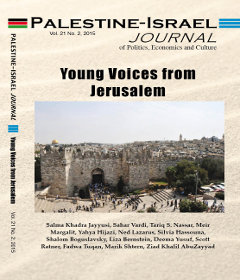Jerusalem is at the core of the Israeli-Palestinian conflict. But Jerusalem is not only a territory or the site of holy places but its the people who live and experience life in the city day by day. These people know more than anyone else what the complexities of living in a united-divided city are. Jerusalem is a unique city where one side — the Israeli side — insists, by mandate of power and military occupation, that it is its sole eternal capital, while the other side rejects the occupation and the unilateral annexation of East Jerusalem, which it insists is an integral part of the Occupied Palestinian Territories and the capital of Palestine.
After almost half a century of false claims that the city is united, the reality of the city states clearly that Jerusalem is a divided city with two totally different societies each with its own social fabric, lifestyle, and national affiliation.
The more time passes, the more the two societies are growing farther apart from
read more ...
